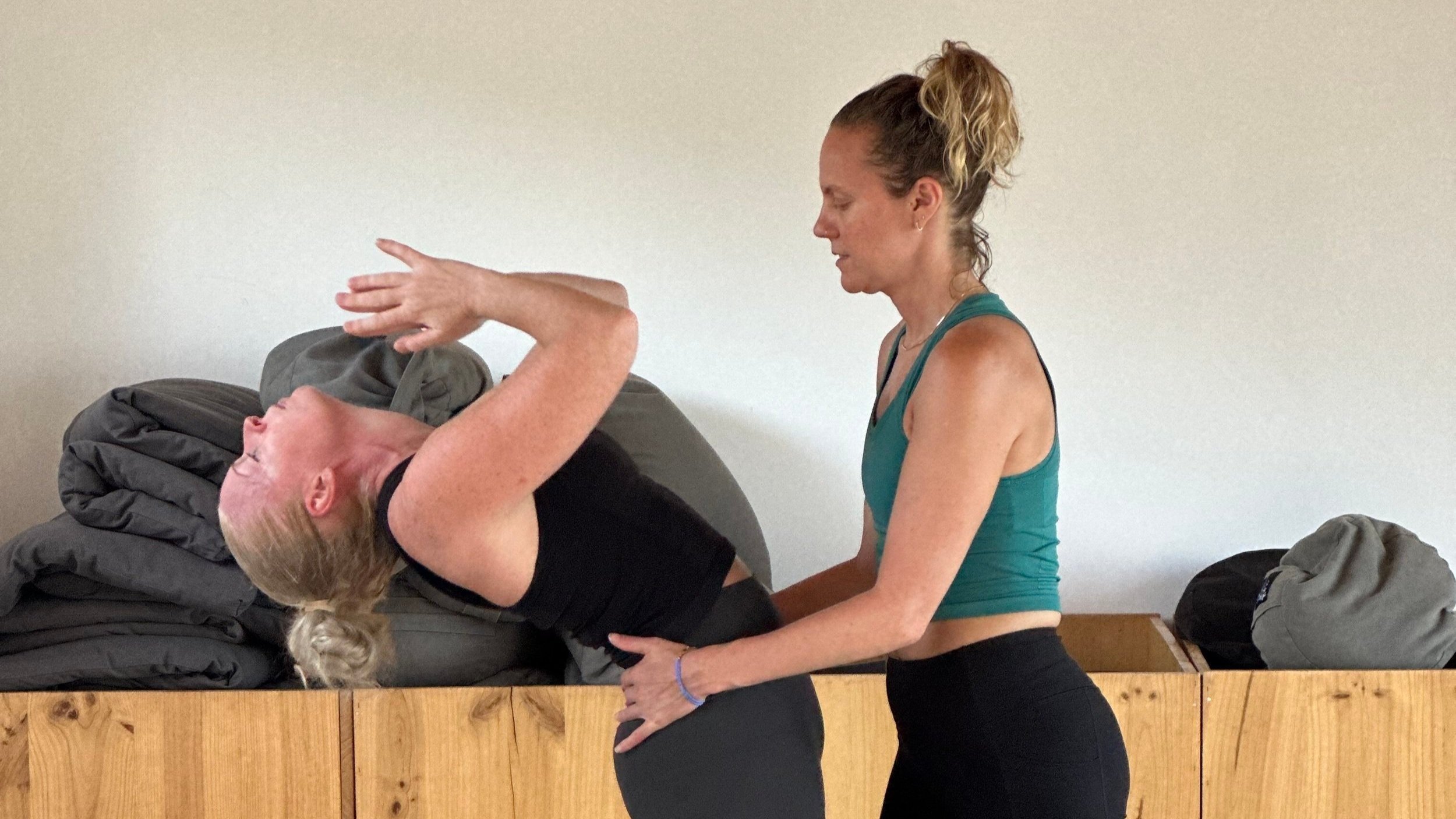5 Ashtanga Yoga Myths We Should Let Go Of
Lauren helping a practitioner with dropbacks
5 Ashtanga Yoga Myths We Should Let Go Of
Ashtanga yoga is a transformative practice, but over the years, some misconceptions have developed around it. These myths can make Ashtanga seem intimidating or rigid, and deter people from taking up the practice and experiencing its true benefits.
In this post, I’ll address five common myths surrounding Ashtanga yoga, explain why they no longer serve us, and why it’s time to let them go.
Whether you’re new to Ashtanga or a seasoned practitioner, letting go of these misconceptions will help you approach the practice with a more open and accessible mindset.
Myth 1: You Have to Practice First Thing in the Morning
In Hinduism, Brahma Muhurta—the sacred 90-minute period before sunrise—is considered an ideal time for yoga or meditation, as it’s a time of stillness, clear air, and quiet.
While practicing yoga during this time is recommended, it’s worth noting that the sun rises and sets consistently throughout the year on the Indian Subcontinent due to its proximity to the equator. This makes it much easier to establish a routine. However, for those of us living closer to the poles, sunrise varies significantly. For example, in London, Brahma Muhurta begins at 2:15 AM in June, while in December it starts 6:30 AM— which in my opinion is a much more reasonable time for yoga practice.
Life is busy, and practicing in the morning, whether in line with Brahma Muhurta or not, may not fit everyone’s schedule. Additionally, our natural circadian rhythms vary—some people are early risers, while others are night owls, possibly to the evolutionary reasons, (allowing for someone to be awake to keep watch at all times). So, if morning practice doesn’t work for you, don’t stress. Life is challenging enough without beating yourself up because you’re not a morning person, or you have an early start to your working day.
Practice whenever you can! Committing to your practice is what matters most. Plus, if you’re an evening yoga practitioner, you can join me for practice at AYL :)
Myth 2: Ashtanga Is Only for the Young and Flexible
I’ve often heard people say, “I’m too stiff for yoga” or “I’m too old to start Ashtanga.” But I’ve always believed that the beauty of Ashtanga lies in its adaptability—it can and should be modified to suit each individual.
As a yoga therapist, I’ve taught variations of Ashtanga to people ranging in age from 16 to 76, both in seated and mat-based formats. The foundation of the practice—moving with the breath and using drishti (focused gaze)—remains the same, and all asanas can be adapted. Unlike in typical yoga classes, where a one-size-fits-all approach is used, in a self-practice setting, practitioners can work at their own pace and receive personalised guidance from their teacher making it an ideal learning environment.
Myth 3: Ashtangis Shouldn't Do Other Forms of Movement
There was once a belief that if you practiced Ashtanga, you shouldn’t engage in any other physical activities, as it would make you stiff and interfere with your practice. I disagree with this for a number of reasons, firstly, because it places too much emphasis on the physical mastery of yoga asana.
When I started practicing Ashtanga in my early twenties, it was the only form of movement I did for many years, and it worked well for me. However, as I’ve grown older, I’ve found that I need to move my body in different ways. Research supports the benefits of strength training for women over 40, and I’ve personally found building strength essential for injury recovery. Plus, the advantages of connecting with nature through activities like running, swimming, or walking shouldn’t be overlooked.
Myth 4: You Must Do Your Full Ashtanga Practice Every Day to Benefit
It’s a common myth that you need to complete your full practice at full intensity every day. This approach might be feasible on a yoga retreat, or when studying in Mysore, where you can dedicate your entire day to practice, rest and recovery. However, in the "real world," this isn’t always practical.
Your yoga practice should support your life, not the other way around. There’s no point in doing a strong practice daily if it leaves you feeling exhausted and unable to fully engage with the rest of your life, work, or relationships.
hormones fluctuate with our monthly cycle and throughout life; perhaps during pregnancy or as we age. there are times when a strong practice may not be serving us. Yoga teaches to become aware of our body and thought patterns therefore making the most of this awareness means responding to the changes in your body rather than rigidly adhering to external expectations.
Taking ten minutes to sit quietly and focus on your breath is a complete practice.
Myth 5: The Ashtanga Sequence Must Be Followed Without Variation, and Each Asana Must Be Mastered Before Moving On
Adhering to the Ashtanga sequence can help create discipline in your practice. Once you’ve memorized it, you don’t have to think about what comes next, allowing you to focus on the Tristhana method of breath, posture, and drishti, turning your practice into a moving meditation.
Following the sequence strictly works well for practitioners who are able to move through the primary and intermediate series with relative ease.
However, not everyone has the same anatomy, and it’s not helpful to restrict someone from practicing therapeutic postures, such as Salabhasana and other back-bends from the second series, simply because their anatomy doesn’t allow for binding Marichasana D.
In today's world, where we spend much of our time hunched forward (sitting at desks or looking at our phones), the benefits of movements that counteract this and maintain a healthy spine should not be overlooked.


